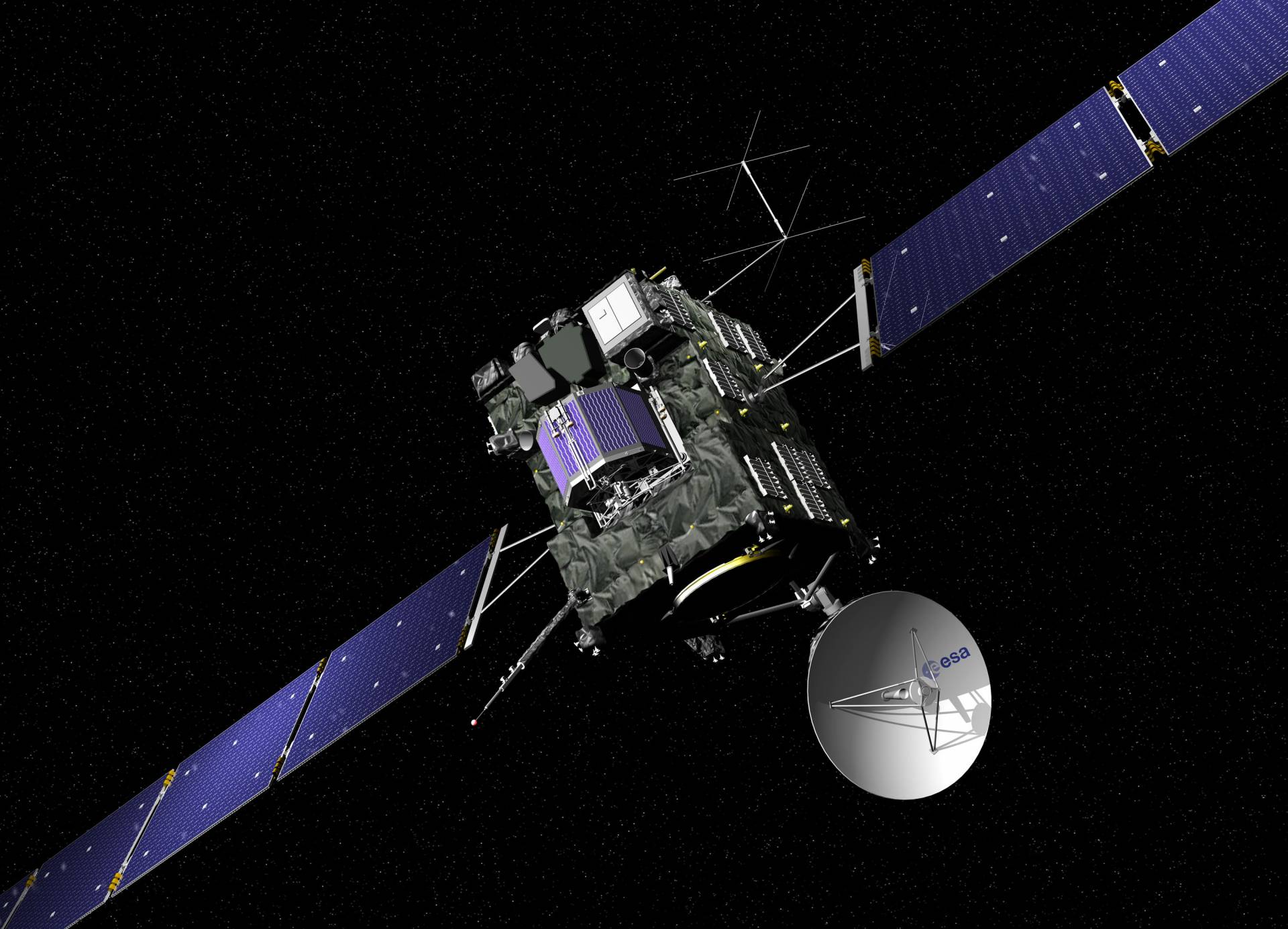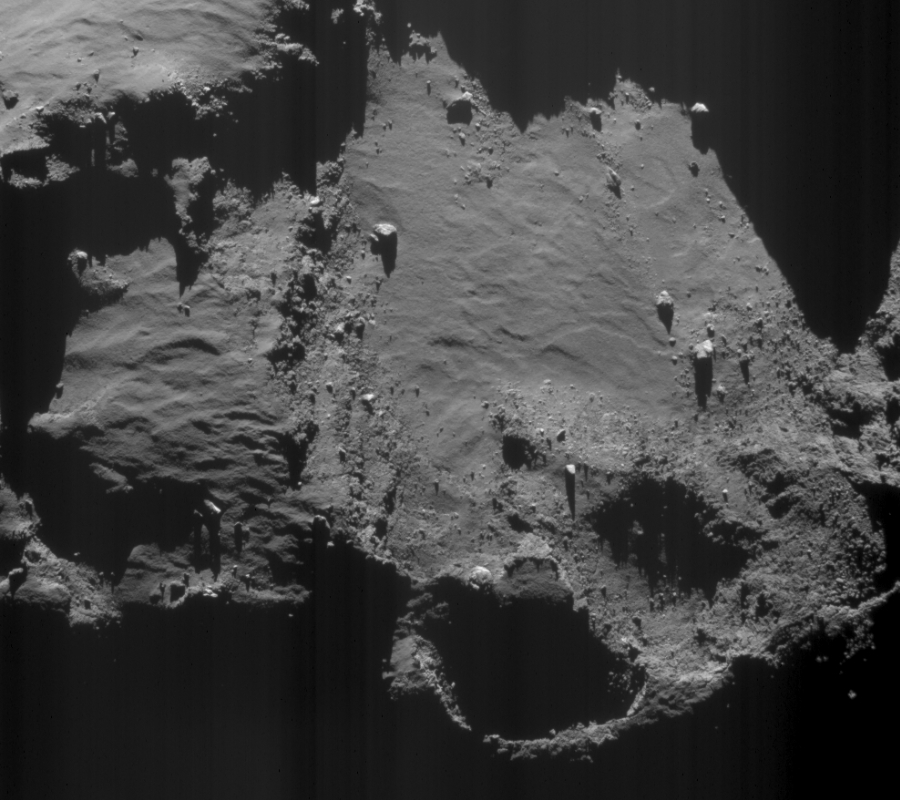The Rosetta mission, which reached Comet Churyumov-Gerasimenko (67P) in August 2014, is expected to end within a month. The Rosetta spacecraft, controlled by the European Space Agency (ESA), has overcome a complicated career after a failing Ariane 5 rocket delayed its launch until 2004.
The probe managed to orbit around a comet and study its composition for an extended period. Its Philae lander performed the first cometary landing in history, although it faced difficulties and bounced along the surface. Philae’s batteries depleted but then managed to recharge as Comet 67P approached the sun. Philae yielded first images of a comet’s surface, providing clues about its composition and inherent structure.

A human spacecraft landing on a comet
Astronomers compare Comet 67P’s shape to that of a peanut, as it appears to be the product of the collision of two smaller comets. It is surrounded by ice and dust, whereas its water is not the same that resides on Earth. This leads scientists to believe that asteroids and not comets are responsible for water appearing on Earth.
But Rosetta’s most significant discovery was that of 16 organic compounds on the comet’s surface. A fraction of the compounds had not been spotted on any other environment before. Analyzing them may reveal whether organic compounds coming from outer space managed to create life on Earth.

“Rosetta has returned reams of data we are only beginning to analyze. It is transforming our understanding of the way the solar system was put together,” stated Mark McCaughrean, a spokesman for ESA.
Scientists suggest that Earth was so hot during formation that its oceans were completely evaporated at some point, which brings the necessity of water being brought to Earth from extraterrestrial sources, most assuredly comets or asteroids.
“Comet 67P is amazingly light as a result of all these cavities. It is like a big lump of pumice that measures 3km by 5km. If you dropped it in the sea, it would float,” stated Natalie Starkey from Open University.
Rosetta’s last task is to perform a planned crash-landing onto the comet’s surface by September 30, which will allow it to take pictures with the highest resolution possible.
The European Space Agency is responsible for the Rosetta exploration mission. It is named after the Rosetta Stone, a slab of volcanic rock found in Egypt which now resides at London’s British Museum.
The stone featured Greek and Egyptian hieroglyphics. Because the Rosetta Stone is considered to be a key to understanding ancient history, ESA’s Rosetta spacecraft is also perceived as the enabler to discovering the earliest history of our galaxy, through the surveying of comets.
The first-ever comet encounter with a spacecraft was achieved on 1979, but Rosetta will be the first to land on a comet’s nucleus. The ship cost almost $1 billion to build and launch. It lifted off from French Guyana in March 2004, flying by Earth and Mars to finally reach its destination. Comet 67P orbits the sun every 6.5 Earth years.
Source: European Space Agency
